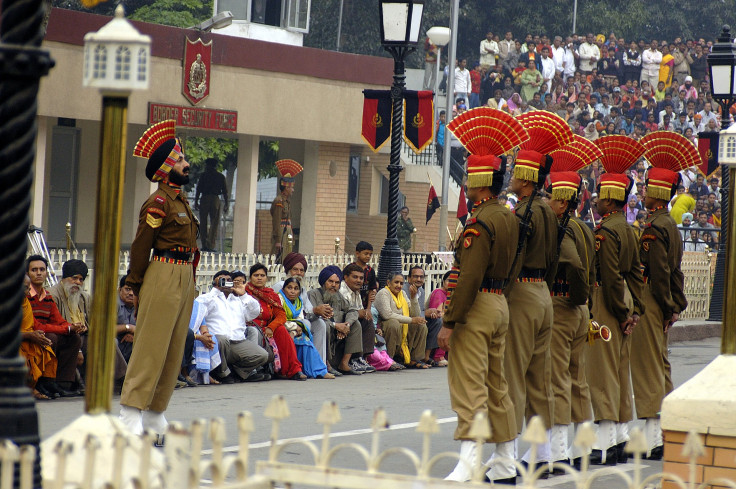India Seeks Gentler, Kinder Border Ceremony With Bangladesh, In Contrast To Aggressive Theatrics On Pakistan Border

The "border ceremony" practiced daily on the India-Pakistan frontier for the last 50-plus years will soon be replicated on the India-Bangladesh border – but without all the militant aggression, foot-stomping and theatricality associated with the former.
The Indian Express newspaper reported that the so-called “retreat ceremonies” (which signal the end of the official day of duty, while paying respect to one’s flag) on the border with Bangladesh will, in stark contrast to the Pakistani frontier ceremony, maintain an air of cordiality and would even include readings of works by the famous Bengali poet Kazi Nazrul Islam, who called for an undivided Bengal.
Last March, officials from New Delhi and Dhaka agreed to hold such retreat ceremonies at four locations along their 2,400-mile- border -- at Petrapole-Benapole and Siliguri in West Bengal and Changrabandha-Burimari and Akhaura in Tripura.
"We decided to include Kazi Nazrul Islam's works as we wanted to do something which projected the common history of both countries,” said B.D. Sharma, additional director general of India’s Border Security Force. “If people from both sides of the border come to watch the ceremony, they should go back with a slice of history. Moreover, it should project the culture of Bengal."
Sharma added that the retreat ceremonies will be held from Friday to Sunday, since the weekend in Bangladesh starts on Friday.
The BSF has even asked Bengali singer Nirmalya Roy and dancer Alokananda Roy to choreograph the ceremony.
"Everything is in place,” another officer told the Express. “Our men are already trained to perform such parades. We will also include schoolchildren from both sides in the ceremony. Besides parades, it will also have dance and music.”
The new ceremonies are expected to build some measure of confidence between the two neighbors, while boosting tourism, Indian media commented.
The daily retreat ceremonies on the other side of India, at the Attari-Wagah border between Punjab and Pakistan, have long been controversial, although highly colorful and entertaining and watched by thousands.
At that tense locale, members of India’s BSF and Pakistan Rangers try to outdo each other in their marching maneuvers and foot-stomping histrionics. Initiated in 1959, the joint border ceremony – at Wagah, which is halfway between Lahore, Pakistan, and Amritsar, India -- has become a spectacle unto itself, attracting many foreign tourists, as well as legions of Indians and Pakistanis who use the moment to shout patriotic slogans.
British television personality Michael Palin, who has filmed the ceremony, called it a display of "carefully choreographed contempt."
“The apparent intent of the synchronized [Wagah] ceremony is to lower the flag of both nations before sunset,” wrote Frank Jacobs in an op-ed piece in the New York Times.
“But as the sentries from either side dance their aggressive no-touch tango, the real object of the ceremony becomes clear: to act as a vent, right here on the geopolitical fault line, for the deep hostility and mutual resentment between India and Pakistan. In an unintentional side effect, the ceremony also exposes the mutual resemblance between both sides.”
India’s hostile relations with Pakistanis are well known – but ties with Bangladesh are not rosy either, and the porous border between the two countries represents the crux of their conflict.
Aside from the trade in drugs and illegal immigrants that plague the border region, its exact location and contours are also unclear, as result of the 1947 partition which artificially created what was then called East Pakistan (now Bangladesh) out of half of Bengal.
In April 2001, India and Bangladesh even fought a brief war over the disputed border, resulting in the death of at least 19 border guards.
© Copyright IBTimes 2024. All rights reserved.





















